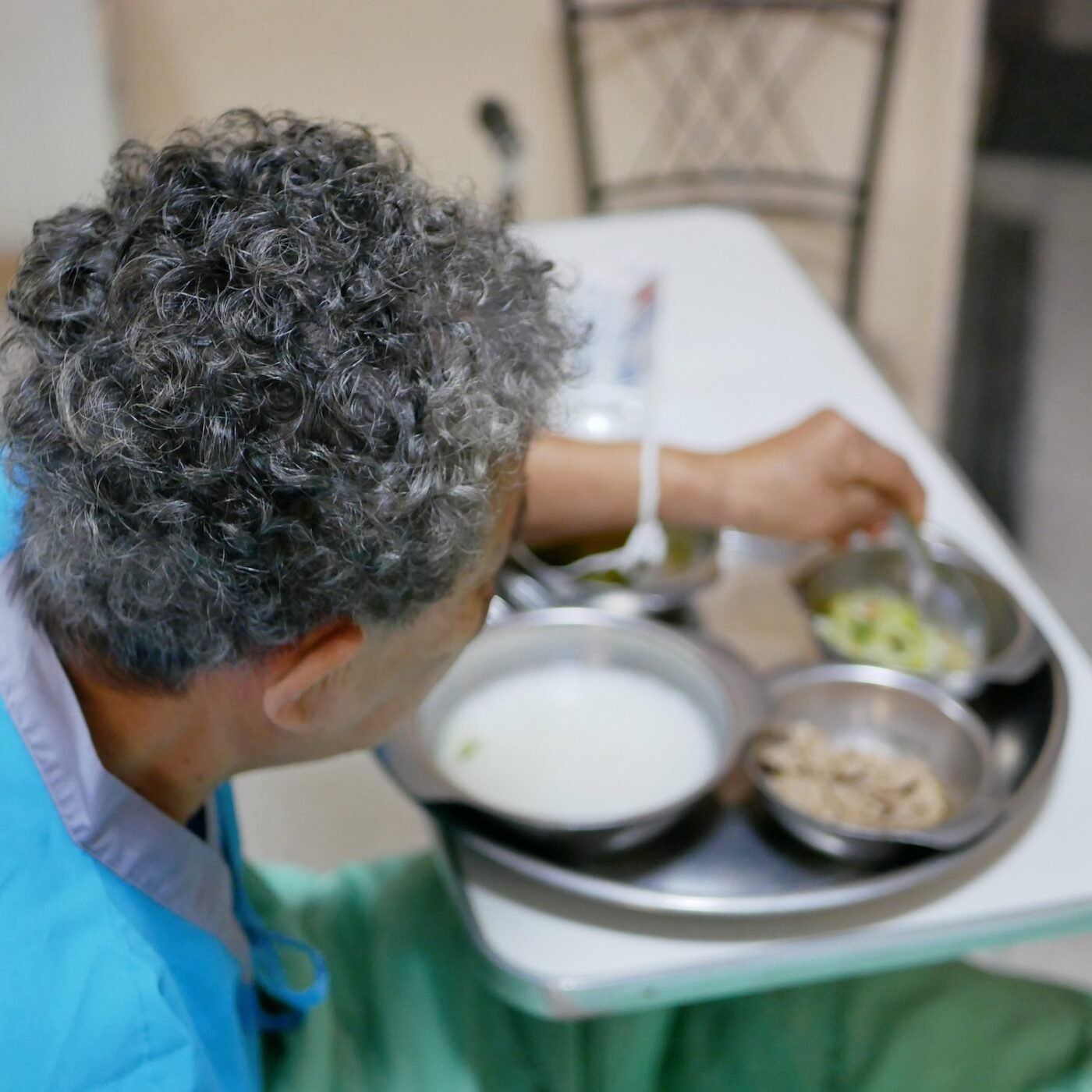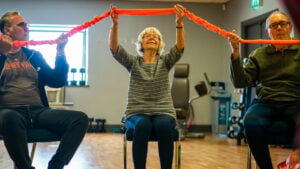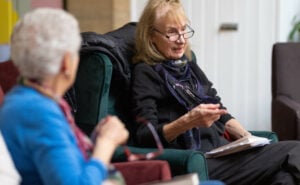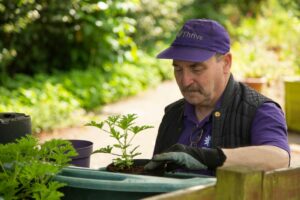Food for Life – improving nutrition and encouraging sociable mealtimes in later life

As Head of Service Design for Food for Life, Francesca Sanders works to bring the voice of the user into the design of services including Better Care; a Lottery funded project that aims to improve wellbeing and nutrition among people in later life.
We talked to Francesca Sanders about the importance of sociable mealtimes as a way to stimulate interest in food and create connections.
What is the Food for Life Better Care programme and what are its aims?
Food for Life is a Soil Association programme based on making good food the easy choice for everyone and healthy, tasty and sustainable meals the norm for all to enjoy. It also focuses on reconnecting people with where their food comes from, teaching them how it’s grown and cooked and championing the importance of well-sourced ingredients.
We work with schools, nurseries, hospitals and care homes, helping them build knowledge and skills and engage children and parents, staff, patients and visitors, caterers, carers and the wider community.
The Food for Life Better Care programme came out of a recognition of two key things: the increasing levels of loneliness among the older population and the fact that food is a brilliant way to bring people of all generations together.
We wanted to be able to support people in later life to engage in growing, cooking and eating activities – and to improve levels of nutrition as a result.
Working with Local Authority and NHS providers, care settings, local and national NGOs and volunteering organisations, we are co-designing the programmes with older people that are tailored to meet the different needs for health and social care within each region.
We’re trying to raise the profile of good food, and one of the ways to do that is by bringing people together and making food a social event once more.
Francesca Sanders
Has there been a change in the way we eat and what impact has that had on society?
There has definitely been a change in society in terms of people feeling they have less time to be able to invest in growing, cooking and eating food. And this is something that cuts across the generations.
We’re trying to raise the profile of good food, and one of the ways in which you can do that is by bringing people together and making food a social event once more.
Through our work in schools, we recognise that parents, for example, often don’t have time to cook and eat together with their children. In one school we are working with, the head teacher recognised that a lot of the children didn’t know where their food was coming from or how to cook food.
They also saw that the grandparents, who were quite heavily involved in the childcare, actually wanted to be able to pass on their cooking skills and to be able to spend time cooking and eating together.
So we helped to create links between the school and the grandparents so they can come in and run cooking lessons to raise the profile of food and eating there. Another benefit is that they can also go home and share those experiences and skills with their grandchildren as well.
How can we improve the eating experience of older people in care homes and hospitals?
One aspect that is powerful in terms of improving wellbeing, appetite and interest in food has been around creating more of a social element to eating.
"By making eating in the hospital a social event we have found people have become more confident about eating when they sit down together."
Francesca Sanders
People’s relationship with food can change as they get older. As people go through life transitions, we know that there can often be a loss of motivation to cook or even to eat if you’re on your own. In early research that we did, we heard about people who would come to their daycare centre having lived off biscuits for weeks.
We are currently working with one NHS Trust, for example, to support older people in hospital wards to be able to eat together. It’s a simple initiative but what it means – and what we’ve heard from the nursing team – is that people have a highlight to their day. And in turn, there is more of a need to get out of bed and get dressed, helping to avoid what has been dubbed “pyjama paralysis”.
By making eating in the hospital a social event we have found people have become more confident about food when they have sat down together – and as a result, they have started to eat more.
What do you define as ‘good food’?
Good food is food that is nutritious and ideally fresh and locally sourced wherever possible. We think it’s important that food be minimally processed – but most importantly, we believe food is good when it’s shared together.
One of the elements we are also working on is developing an independent quality award – the ‘Food Life Served Here’ mark – which sets out standards for quality in catered meals.
There are three levels of the mark – Bronze, Silver or Gold – the entry-level Bronze Award is primarily concerned with delivering fresh, traceable food that meets nutritional guidelines.
For more information on how diet and exercise can help with Mobility and Independence, check out our helpful guide.
Silver and Gold Awards focus more on the use of organic produce, ethical and environmentally friendly food, locally sourced ingredients and taking steps to offer healthier menus.
Some 1.6m meals are served every day within hospitals, care settings and schools bearing these catering marks, helping organisations to demonstrate that they are committed to good quality, nutritious food.
How important is the intergenerational element in providing sustainable solutions for later life loneliness?
It is really important – and sharing good food and activities can be a great way to mix up the generations.
Through this programme, we’ve found that there are lots of people in the community who have skills and passion around food and we want to create the opportunities for those in later life to be able to share those with younger people.
Food seems to spark interest in everyone; in community groups and care setting projects the families of older people found it easy to be able to engage in food preparation activities with their loved ones and would come in to join in with making bread or growing vegetables.
Many people can lose interest in food in later life and what we’ve found is that by getting them involved in growing or preparing their food their interest in food increases – and their appetite in turn for the food being served.
Can gardening be a part of improving food experience for people across all generations?
Gardening features quite highly in a lot of the activities that involve different generations. It can help younger people to connect with where their food comes from and provide positive therapy for people in later life.
Gardening was a vital feature of the approach of one of the flagship projects that we ran with a care home in Edinburgh to help them change the culture around food. They created raised vegetable beds there, and school children would come in and garden with the residents.
One of the residents who got really involved in the project managed to lift his depression by gardening and rekindle his interest – so much so that he ended up being able to go back home.
I think one of the areas where we’ve been able to make a significant impact in the Better Care programme so far is in connecting schools and care settings.
For example, we are running a project with a care home and a nursery where the preschoolers come round every two weeks to grow seeds with the residents. The plan at the end is to make egg and cress sandwiches together using the salad they’ve grown.
The fact that the children keep coming back and their visit is not just a tokenistic one-off creates meaningful common ground around good food – and as such it’s been really successful.
This interview was part of a series brought to you by Elder. Wherever you may need a live-in carer in the UK, Elder can help.
Read our latest interviews
Browse our latest interviews, and research on elderly living, from leading national experts.

How ageist is our society? – Interview with the Centre for Ageing Better
Ahead of their Action Day on the 20th March, we spoke to the Centre for Ageing Better about their pioneering ‘Age Without Limits’ campaign which is encouraging everyone to take a stand against ageism.

More than just a pet – Interview with Give a Dog a Bone Founder Louise Russell
Back to News page > There are over 1 million lonely older people living in the UK.And, each year around 250,000 animals enter rescue centres. Give a Dog a Bone…and

Neurodiversity and ageing – What do we know?
In this guest think piece Professor Amanda Kirby discusses how far we’ve come in understanding neurodiversity in later life, and how far we still have to go.

Struggling to talk about care? Elder’s latest survey finds you’re not alone.
Back to News page > Quick overview A recent survey from Elder – a leading live-in care marketplace, found just 27 percent of older people who either need care now,

How can caregivers overcome sleep problems?
We asked Channel 4 sleep expert Stephanie Romiszewski about the impact of poor sleep, and how caregivers can break unhealthy sleep cycles.

The therapeutic power of gardening: Advice from Thrive
We recently asked Thrive – a national charity that uses gardening to improve wellbeing – about the therapeutic power of gardening.